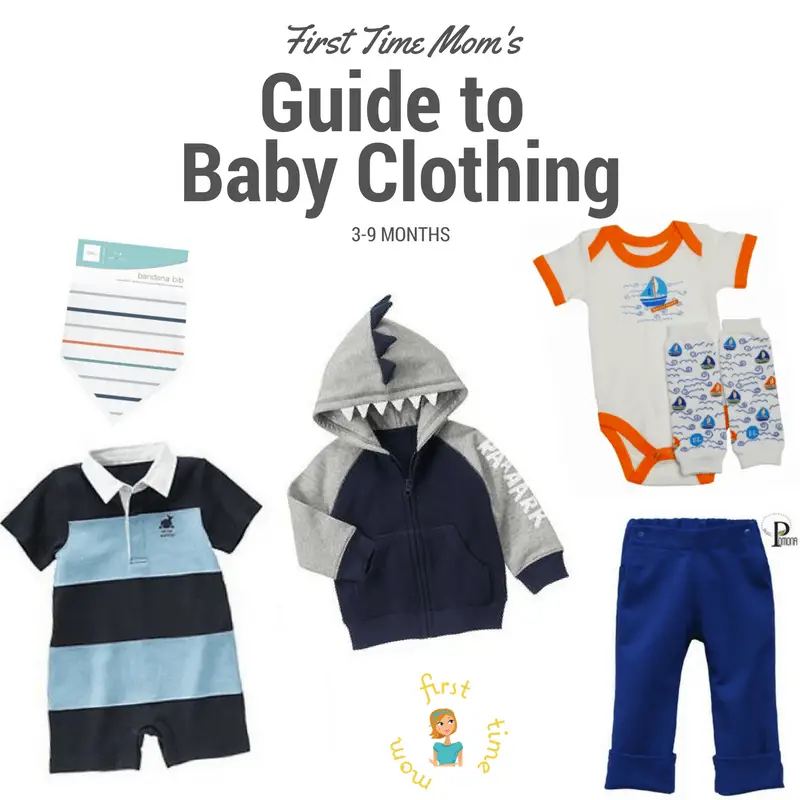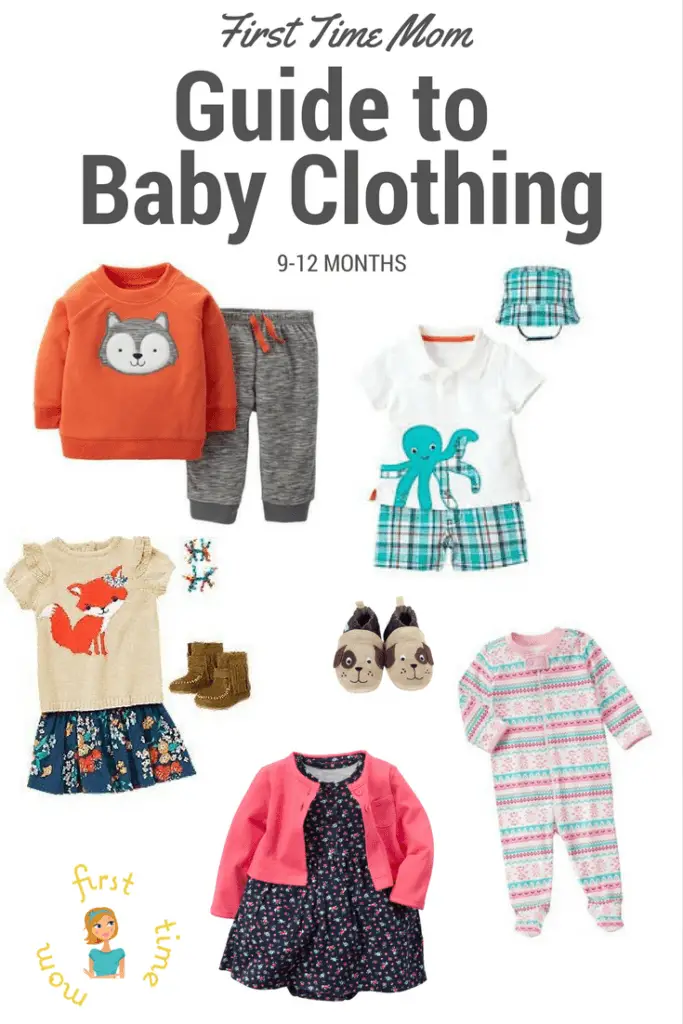First Time Mom’s Guide to Baby Clothes Function and Fashion

As an Amazon Associate I earn from qualifying purchases.
As a first time mom shopping for baby clothes was so adorably fun and yet also puzzling. Suddenly there was a whole new world of clothing items to familiarize myself to: onesies, sleepers, rompers, bundlers, footed pants, hats, bibs, bandanas, OH MY! I also noticed trends in what types of clothes were readily available depending on my baby’s age. For example in sizes 0-6 months there are endless onesies but baby t-shirts seem nonexistent. This left me asking why? As I started dressing little bundle of joy the puzzle pieces started slowly fitting together and started making sense. Luckily for the expecting first time moms reading this, you don’t have to wait for your baby to arrival to start wrapping your head around the rhyme and reason behind baby clothing because we’ve got you covered with First Time Mom’s Guide to Baby Clothes Function and Fashion.
First Time Mom’s Guide to Baby Clothes Function and Fashion
0-3 Months
Major Clothing Items: Onesies, Sleepers, Bundlers, Footed Pants, Long Sleeve Items With Hand Coverings, Hats.
Babies at this stage are kind of like Goldilocks, they like things not too hot, not too cold but just right. They’re still developing the ability to control their body temperature and their extremities tend to get cold easily; hence all the long sleeved and footed items. Tiny baby finger nails grow quickly, are like little razors, and they have almost no control over their arms or hands, so long sleeve items with the hand coverings are so handy at this age. While babies 0-3 months old are not mobile they sure do wiggle and kick a lot when their awake. One piece items that stay in place like onesies, sleepers, and footed pants are great. Finally you’ll want to think about not the clothing’s function on the baby but also its ease of use on your end. At this point in your baby’s life you’ll definitely be sleep deprived during many clothing changes so do yourself a favor and choose snaps over buttons and zippers over snaps. This is where items like “bundlers” or open bottom sleeper gowns under an easy swaddle are nice at night.
Quick Tip: Ever notice the wide neck design on almost all onesies? That feature enables parents to remove the onesies either going up over the head or down over the waist… If you baby has a diaper blowout you don’t want to remove that clothing over baby’s head. (P.S. Ever considered cloth diapering… you have way less blowouts in cloth!)
3-9 Months
Major Clothing Items: Onsies, Sleepers, Rompers, Pants, Leggings, Hooded Items, Baby Legs, Socks, Bibs, Bandanas
At this point, your baby’s is no longer an infant and loves interacting with their world. They’re working up to being mobile but sure love to grab, wiggle, and roll. Speaking of grabbing, any hat you put on their head is now a potential toy. This is why I prefer hoodies or hooded jackets starting around 4 months. You’ll probably prefer the ease of one piece outfits like rompers and items that stay in place like pairing a onesie with a pair of baby leggings with socks tucked in under the leggings.

Images courtesy of Aden & Anais, Gymboree, BabyLegs, & Project Pomona
Most babies start to drool around this time so baby bandanas are functional and adorable accessories you’ll want to add to your baby’s wardrobe. Baby leg warmers are another functional and fashionable accessory because you can change baby’s diaper without undoing their entire outfit!
9-12 Months
Major Clothing Items: Footed PJ’s, T-Shirts, Sweaters, Pants, Leggings, Shorts, Skirts, Dresses, Socks, No-Skid Socks, Soft Sole Shoes
At this point your baby is looking ahead to their life as a toddler. In fact, some babies are walking at nine months. When it comes to walking barefoot is best, but you’ll want plenty of no-skid socks and a pair or two of soft sole shoes. Whether your baby is crawling, pulling up, or walking life is becoming more and more up right, which is why many parents start preferring t-shirts over onesies. Don’t get me wrong, you’ll want some onesies for your nine month old, but you can’t do the pull out, peek in the back of the pants poop check with a onesie. The older your kiddo gets the less patience he or she will have for poop checks. Little ones also start to notice what is on their clothing around this age so try to notice their preferences have fun with it.
Quick Tip: Ever wonder what is the difference between the sizes 24 month and 2T? 24 month clothes are sized more with a baby in mind -think roomier and rounder. 2T clothes are designed for early walkers and have less room for a bulky diaper.
Clothing Function & Potty Training
When your child is ready for potting training you’ll want to be sure that their clothing doesn’t frustrate the process. At this stage you’ll want to avoid hard zippers, buttons, or snaps. Instead go with elastic waist bands and if your girl likes dress go with it! Learning how get themselves dressed and undressed is an important skill that is difficult to master at first so keep that in mind when shopping.
So you see, there is a rhyme and reason behind baby clothes function and fashion. Use this guide as you put together your little one’s wardrobe and you’ll have the coziest and coolest baby on the block!






